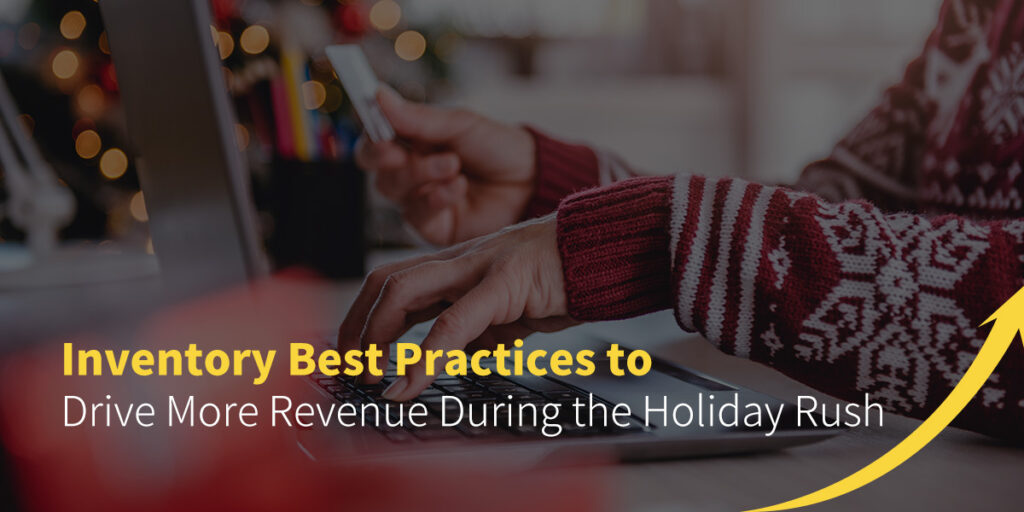After you’ve invested so much time in preparation, execution, marketing, sourcing, and merchandising, it can be a massive disappointment to learn that you don’t have enough inventory to serve demand in the middle of the holidays.
Making adequate holiday inventory preparations can mean the difference between mediocre and substantial profit. In this post, you’ll learn exactly how to do that.

Optimize warehouse layout
if you handle order fulfilment in-house, ensure your facility is ready for the rise in demand. Your priorities should be organization, storage, flow, capacity and space utilization. You may use telematics to evaluate forklift and operator utilization and traffic flow.
Review space requirements
inventory can grow by up to 40% during the holidays, and the merchandise arrives weeks before it’s to be sold. You’ll want to take stock of your warehouse space and assess how fresh inventory will affect your operations. will your forklifts be restricted by rack positions and aisle spacing? Will you need to change pedestrian walkways?
Check your equipment
Your ability to handle increased traffic depends on how well your equipment works. Monitor your check lift equipment, backup power supplies, power conveyors, order printers and vehicles. Keeping your machinery in optimal condition will prevent untimely failures during the peak season.
Stock up on supplies
check the previous years’ orders to determine what quantity of supplies you’ll need. Whether its shipping supplies and packaging or paper towels and branded gift cards. Remember to make your purchases early so you can avoid increased shipping prices due to the holiday rush.

Forecast demand
Successful inventory management depends on reliable demand predictions – you won’t know how much of a commodity to should stock without an accurate forecast of future sales.
Demand forecasting is a critical prerequisite for a profitable holiday season. To do it right, you’ll need specific tools capable of comparing lead times for your products and readjusting reorder quantities wherever necessary.
These tools often come bundled with an inventory management system, and they evaluate previous sales data from each of your products to provide reliable demand forecasts for each item in your inventory. Their projections are based on variables such as seasonality, previous holiday demand, and marketing campaigns.
It’s also important to remember that eCommerce is growing incredibly fast and that the trend has been augmented by the Covid-19 pandemic. While you consider the quantity of inventory you have available and the amounts you sold last year, it will help to account for growth in the coming holiday season.
Synchronize demand forecasting with inventory scheduling
while forecasting is useful, it won’t help much with your preparations if you overlook the most significant challenge to holiday fulfilment – when your suppliers close for the holidays.
You’ll want to ensure your suppliers fulfil your orders before they close. Otherwise, you won’t receive the products at your warehouses, and you’ll have nothing to ship to your customers. The best way to avoid this challenge is to incorporate supplier deadlines into your demand forecasting operations.
Create schedules for each supplier. Your plans should allow you to include or exclude specific order dates, and to adjust for future holiday-driven orders. You should also have the ability to modify the reorder quantity to account for the periods when your suppliers are closed. This will enable you to purchase inventory early enough to deliver it to your customers.
If you’re on Amazon FBA, it would be wise to create a timetable for shipping products to its fulfilment centers. You must meet amazon’s deadlines for your items to ship to customers on time.
It’s not going to be easy. Balancing your suppliers’ and distributors’ schedules with your own can be difficult. Thankfully, most inventory management software optimization tools can fully automate your schedules and synchronize them with forecasted demand.
Automate the order management process
Tracking, packing, managing, and shipping all your products can be a challenging task if you have high order volumes, and you’re doing it manually. it’s hard enough during low demand; in the holidays, its all but impossible.
To keep the process smooth, you should invest in helpful tools and integrations that automate repetitive tasks. They will help you keep track of your inventory, monitor sales, and deliver your products quickly. While initial investment costs may seem prohibitive, your investment will pay off.
Streamlining your processes will also help you avoid running out of stock. Nearly 50% of intended purchases are lost when consumers find that an item is unavailable. Integrating your order fulfilment processes will help you make purchase requests at the right time so you won’t run out of inventory half-way through the holiday season.
Maintain customer service levels
Your success as a retailer depends on your ability to prove to consumers that you know what they want. Unfortunately, maintaining quality of service becomes particularly challenging during the holiday season.
Even after years of reliable and timely order fulfilment, one undelivered order can have a significant impact on customer loyalty. It is crucial, therefore, to ensure you deliver the best customer experiences during the holiday rush. This requires that you have all that’s needed for smooth operation on-hand before the holidays. Inventory optimization and order scheduling will help you manage the surge in demand and keep your customers happy.
From an inventory manager’s point of view, the end-of-year holidays present a unique blend of difficulties not experienced at any other point in the year. Besides short sales periods, and long lead times, the end-of-year sales rush may overload your freight and shipping infrastructure, overwhelm your fulfilment and warehousing staff, and tie up your money in excess inventory.
The inventory management advice covered in this article will help you prepare for the holiday season and avoid all the potential challenges that could keep you from maximizing your sales.
If you need a partner to help you manage seasonal demand, Nextsmartship has a range of third-party fulfilment solutions you may choose from. You’ll get seamless eCommerce platform integration and an automated order management interface that lets you manage all your orders, inventory, and tracking numbers through a single dashboard.
